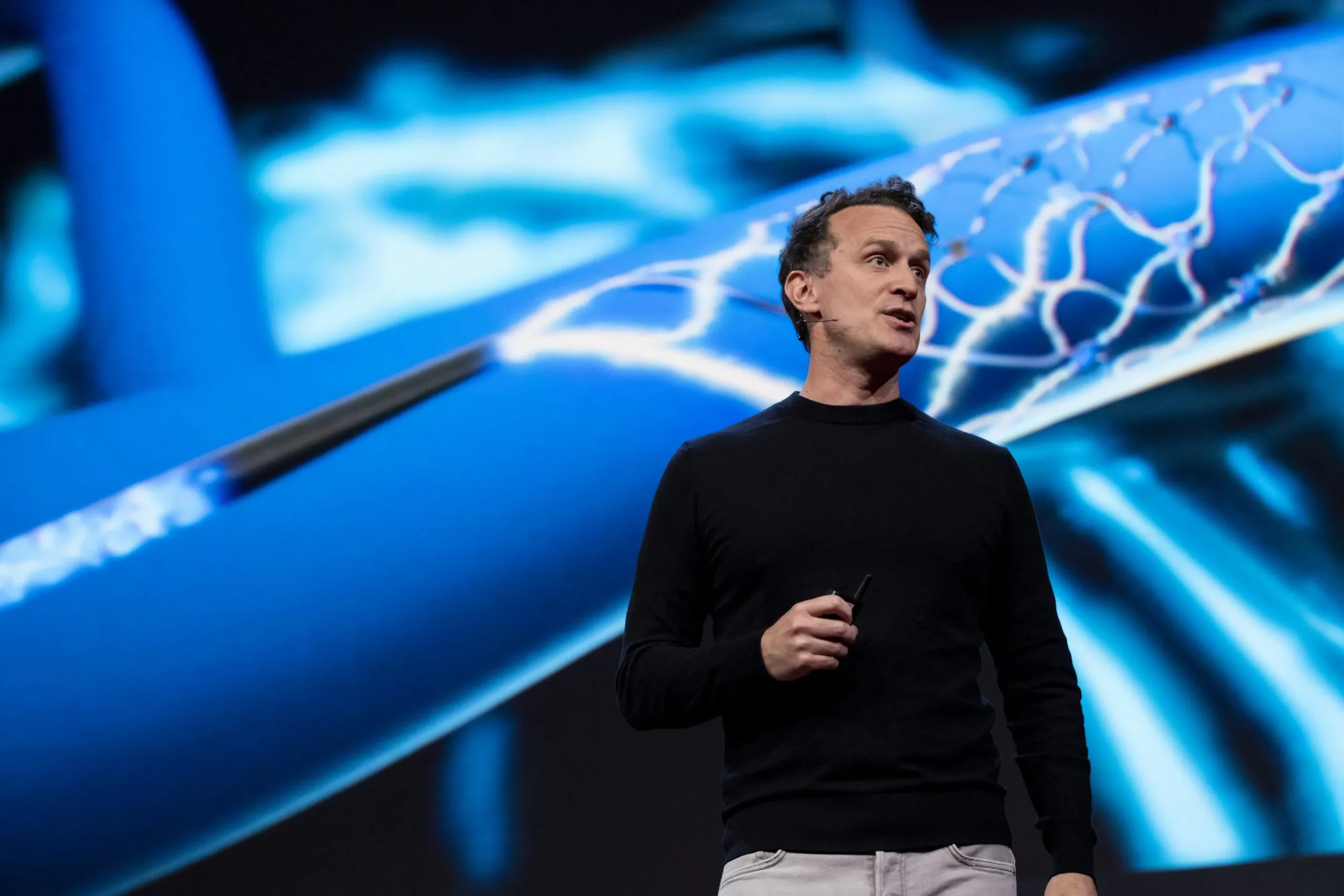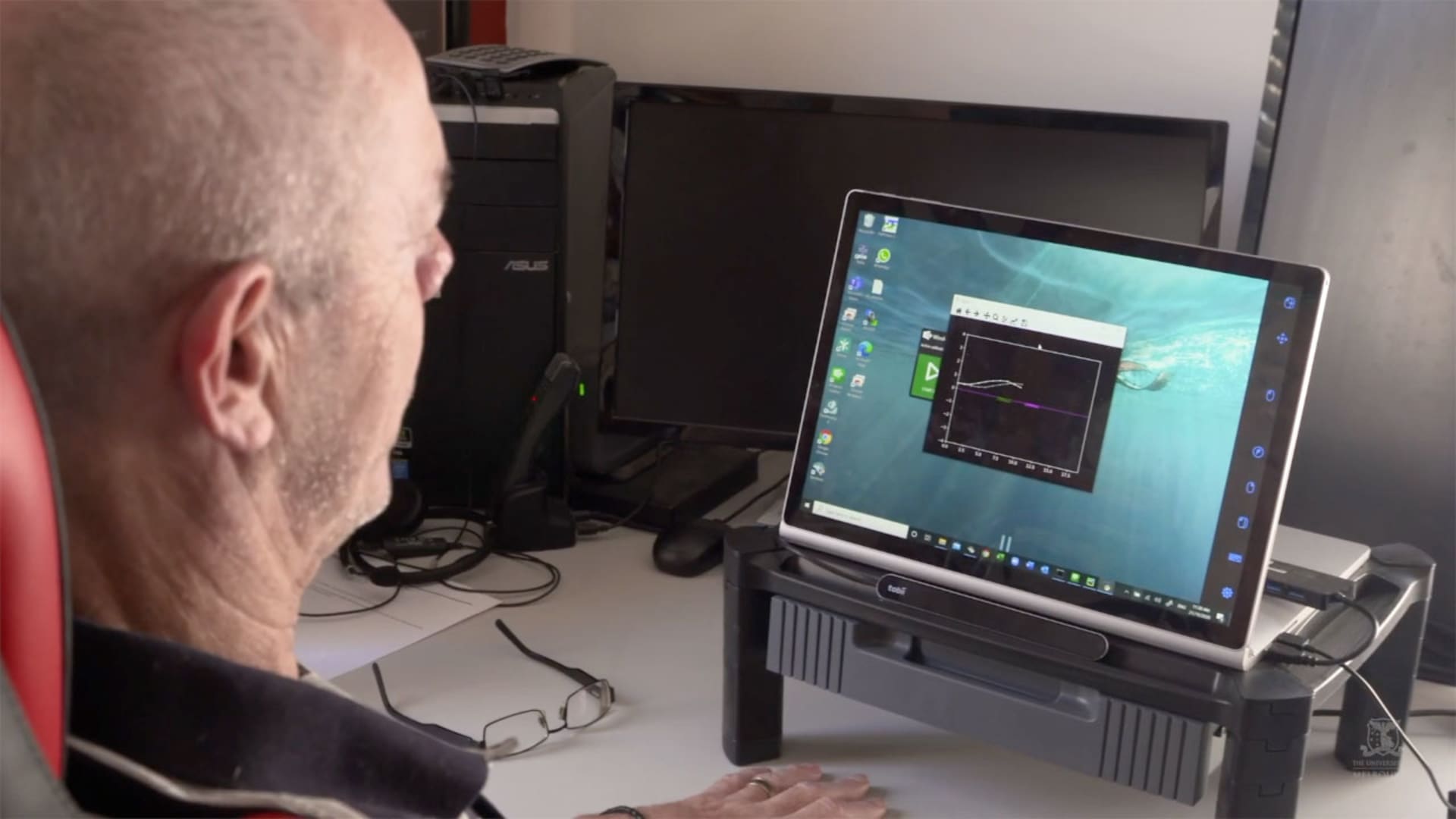In a Brooklyn lab filled with 3D printers and even a makeshift pickleball court, employees at a brain interface startup called Synchron are developing technology aimed at transforming daily life for individuals with paralysis.
The Synchron Switch is implanted through the blood vessels, enabling people with no or very limited physical mobility to control technology such as cursors and smart home devices using their minds. This emerging technology has been used on three patients in the U.S. and four in Australia.
“I’ve seen moments between patient and partner, or patient and spouse, where it’s incredibly joyful and empowering to have regained an ability to be a little bit more independent than before,” Synchron CEO Tom Oxley told in an interview. “It helps them engage in ways that we take for granted.”
Founded in 2012, Synchron is part of the growing brain-computer interface (BCI) industry. A BCI deciphers brain signals and translates them into commands for external technologies.
The most well-known name in this field is Neuralink, largely due to its founder Elon Musk, who also leads Tesla, SpaceX, and Twitter.
However, Musk is not the only tech billionaire betting on the BCI’s transition from radical science to a thriving medical business.
In December, Synchron announced a $75 million financing round, including funding from the investment firms of Microsoft co-founder Bill Gates and Amazon founder Jeff Bezos.
In August 2020, the Food and Drug Administration granted Synchron the Breakthrough Device designation, which is for medical devices with the potential to provide improved treatment for debilitating or life-threatening conditions.
The following year, Synchron became the first company to receive an Investigational Device Exemption from the FDA to conduct trials of a permanently implantable BCI in human patients.
Synchron is enrolling patients in an early feasibility trial to demonstrate that the technology is safe for human use. Six patients will be implanted with Synchron’s BCI during the study, and Chief Commercial Officer Kurt Haggstrom said the company is currently about halfway through.
The company has no revenue yet, and a spokesperson said Synchron is not commenting on the eventual cost of the procedure.
While many competitors require open-brain surgery to implant their BCIs, Synchron uses a less invasive approach that builds on decades of endovascular techniques.
Synchron’s BCI is inserted through the blood vessels, which Oxley describes as the “natural highways” into the brain. The device, called the Stentrode, is fitted with tiny sensors and delivered to the large vein next to the motor cortex.
It connects to an antenna under the skin in the chest, which collects raw brain data and sends it to external devices.
Peter Yoo, senior director of neuroscience at Synchron, explained that because the device is not inserted directly into brain tissue, the signal quality isn’t perfect.
However, the brain does not tolerate foreign objects well, and the less invasive nature of the procedure makes it more accessible.

“There’s roughly about 2,000 interventionalists who can perform these procedures,” Yoo told. “It’s a little bit more scalable, compared to, say, open-brain surgery or burr holes, which only neurosurgeons can perform.”
For patients with severe paralysis or degenerative diseases such as amyotrophic lateral sclerosis (ALS), Synchron’s technology can help them regain the ability to communicate with friends, family, and the outside world through typing, texting, or accessing social media.
Patients can use Synchron’s BCI to shop online and manage their health and finances, but Oxley noted that what often excites them the most is text messaging.
“Losing the ability to text message is incredibly isolating,” Oxley said. “Restoring the ability to text message loved ones is a very emotional restoration of power.”
In December 2021, Oxley handed over his Twitter account to a patient named Philip O’Keefe, who has ALS and struggles to move his hands. About 20 months earlier, O’Keefe had been implanted with Synchron’s BCI.
“hello, world! Short tweet. Monumental progress,” O’Keefe tweeted on Oxley’s page, using the BCI.
Synchron’s technology has caught the attention of its competitors. Musk approached the company to discuss a potential investment last year. Synchron declined to comment on the report, and Neuralink did not respond to a request for comment.
Neuralink is developing a BCI designed to be inserted directly into brain tissue. While the company has not yet tested its device in humans, Musk has stated he hopes to do so this year.
Haggstrom said Synchron’s funding will help accelerate product development and move towards a pivotal clinical trial, bringing the company closer to commercialization.
Khosla Ventures partner Alex Morgan, who led an earlier financing round, said that while Synchron’s device may seem like science fiction, it is based on “real science” and is already significantly improving patients’ lives.
“Synchron is actually helping people as of right now, today,” he said in an interview. “That, to me, is really exceptional.”
In January, the medical journal JAMA Neurology published peer-reviewed, long-term safety results from a trial of Synchron’s BCI system in Australia. The study found that the technology remained safe and did not deteriorate in signal quality or performance over a 12-month period.
“That was a huge publication for us,” Haggstrom said.
Haggstrom emphasized that commercialization is key for all players in the industry.
“I always like to be competitive, and so for me, being first to market is critical,” Haggstrom said.
“We meet future patients to talk to about their needs and stuff, and so when you see that, and you talk to these families and the caregivers, you want to race as fast as you can to provide them assistance in their daily life.”
